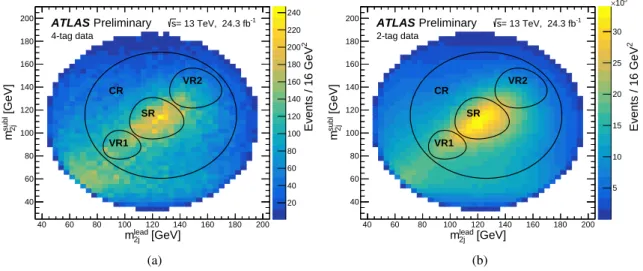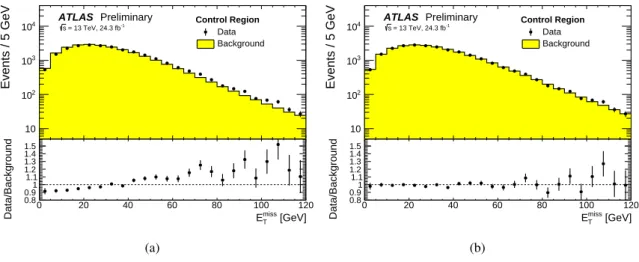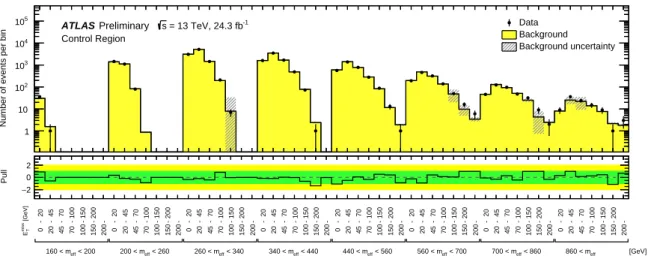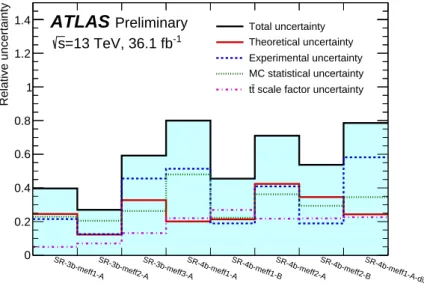s = 13 TeV pp collisions √ b -taggedjetsusingtheATLASdetectorin Searchforpairproductionofhiggsinosinfinalstateswithatleastthree ATLASCONFNote
Volltext
Abbildung
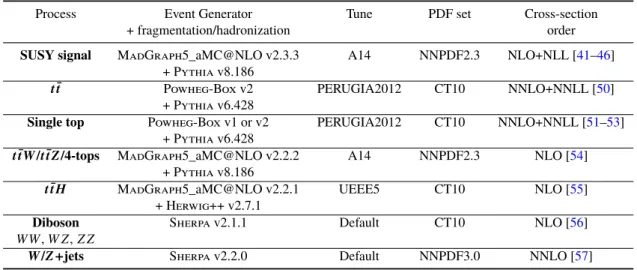
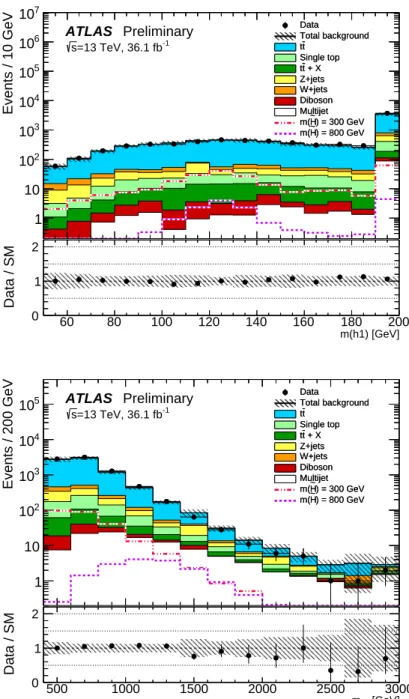


ÄHNLICHE DOKUMENTE
Figure 20: A comparison of the inferred limits to the constraints from direct detection experiments on the spin- independent WIMP-nucleon (spin-dependent WIMP-neutron)
• S: referred to as the object-based ETmiss Significance [76] and defined as follows: pmiss is the vector T of missing momentum in the transverse plane and σL is the total
Monte Carlo (MC) samples of simulated events are used to model the signal and to aid in the estimation of SM background processes, except multijet processes which are estimated
For the dominant t t ¯ , single-top, and Z +jets backgrounds, the expected yield in the SRs is estimated by scaling each MC prediction by a normalization factor (NF) derived from
The cross-sections used to normalise the MC samples are varied according to the uncertainty in the cross- section calculation, which is 13% for t¯ tW , 12% for t¯ t Z production
For hadronic tau lepton decays selected by offline algorithms, the correction factor on the tau trigger identification efficiency is measured with a relative precision of 3–8% for p
Simulated event samples are used to model the signal and background processes in this analysis, except multijet processes which are estimated from data.. These samples are interfaced
The observed and expected upper limits at 95% confidence level (CL) on the number of events from BSM phenomena for each signal region (S 95 obs and S 95 exp ) are derived using the CL


